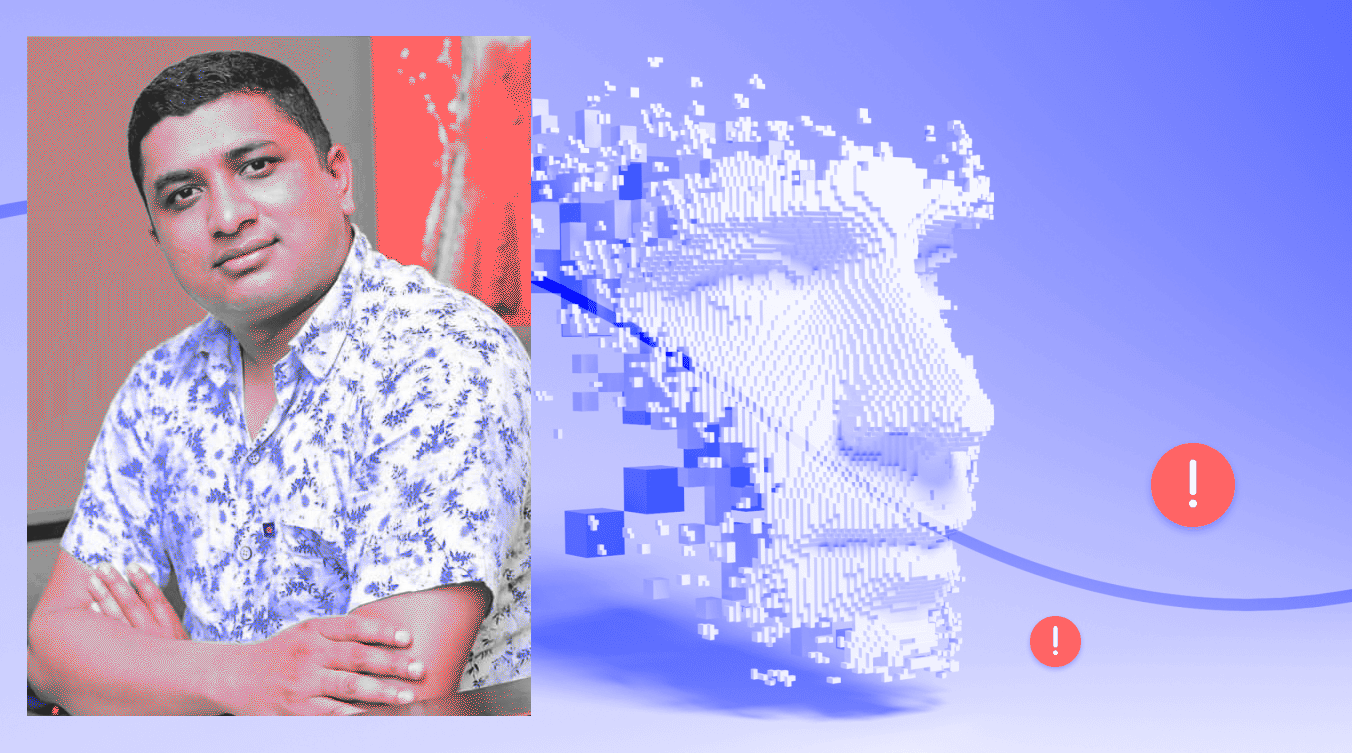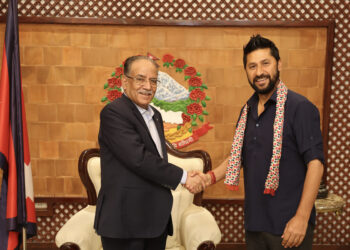KATHMANDU: With advancements in technology, cybercrime has become increasingly concerning.
Recently, a fake video of Kathmandu Metropolitan Mayor Balendra (Balen) Shah and Deputy Mayor Sunita Dangol went viral on Facebook.
This video, which used ‘deepfake’ technology, featured a fabricated scene where the mayor and deputy mayor were shown being humiliated.
The mayor and deputy mayor had attended the final match of the Cava Women’s Volleyball National League, which took place between Nepal and India.
The deepfake video was created using footage from this event.
In the video, both Mayor Shah and Deputy Mayor Dangol’s faces were altered, and their hand and head movements appeared unnatural.
After receiving a complaint, the Cyber Bureau confirmed that the video was produced using deepfake technology.
In countries like Nepal, where digital literacy is still developing, the risks associated with deepfake technology are particularly high. Without effective regulation and mechanisms to control its misuse, many people could become victims.
In a related case, Anu Pariyar from Tanahun, a popular figure on Facebook Reels for her dancing, has also been affected.
Known for her performances to Nepali folk songs, movie tracks, and even Hindi and English songs, Anu has recently been the target of deepfake misuse.
Her fans were shocked when vulgar deepfake videos began circulating, leading to accusations that she had abandoned her Nepali roots for fame.
Anu clarified via social media that she did not produce these explicit videos.
She explained that while her face was used, the body and clothing in the video were not hers.
She emphasized that her name and likeness had been exploited to create misleading content.
In India, deepfake technology has already impacted high-profile individuals, such as Bollywood actress Rashmika Mandanna, entrepreneur Ratan Tata, and cricketer Sachin Tendulkar, prompting the country to enact related legislation.
In Nepal, however, there are currently no specific criminal laws addressing deepfakes.
Deepak Awasthi, spokesperson for the Cyber Bureau, noted that while deepfake technology is being used, it has not yet resulted in significant criminal activities.
Awasthi highlighted that politicians are particularly targeted with deepfake videos for purposes such as revenge. He stressed the need for caution, as deepfake technology could be used for various criminal activities including revenge, theft, and kidnapping.
Awasthi called for the establishment of legal frameworks similar to those in India and other developed countries.
He urged relevant agencies to enhance awareness and develop measures to counteract these technological threats.
Extreme Misuse of Technology
Technology, while a boon for global connectivity and cultural exchange, has also led to significant misuse, contributing to a rise in criminal activities such as those involving deepfake videos.
These manipulated videos can cause considerable harm and panic, highlighting the urgent need for effective countermeasures.
To understand more about deepfakes and how to protect oneself from them, Khabarhub talked with IT expert engineer Uttam Karki.
He provided insights into the nature of deepfake technology and offered advice on safeguarding against its misuse.
He stated: Deepfake technology combines elements of Photoshop, audio manipulation, and video editing using advanced techniques known as deep learning.
Its goal is to convert real photos, audio, and videos into convincing forgeries that are difficult to identify as fake.
A key component of deepfake technology is the Generative Adversarial Network (GAN).
GANs enable the manipulation of real content to create misleading representations.
They can alter spoken content to convey a different meaning or context, making it challenging to detect inaccuracies.
Deepfake creations often appear strikingly realistic, with faces and voices seamlessly replaced or altered.
The technology is precise and sophisticated, making it difficult to discern the fakes from authentic media.
However, discrepancies such as mismatched skin tones, inconsistent lip movements, or incongruent backgrounds may reveal their artificial nature.
The proliferation of deepfake technology is alarming. It poses serious risks, including the theft of sensitive information, fraud, and damage to personal and public reputations.
Effective measures should be implemented in the academic and policy-making fields to mitigate the challenges posed by deepfakes.
The misuse of deepfakes has had implications for international relations and has been widely exploited in politics and entertainment.
Dissatisfied individuals or groups have used deepfakes to discredit politicians or public figures, further amplifying the technology’s impact.
In countries like Nepal, where digital literacy is still developing, the risks associated with deepfake technology are particularly high. Without effective regulation and mechanisms to control its misuse, many people could become victims.
Although some leaders in Nepal have raised concerns about deepfakes in parliament, the debate has been limited.
Addressing this issue requires more than just discussion or reactive anger; it demands proactive government action and collaboration with experts.
Effective measures should be implemented in the academic and policy-making fields to mitigate the challenges posed by deepfakes.









Comment